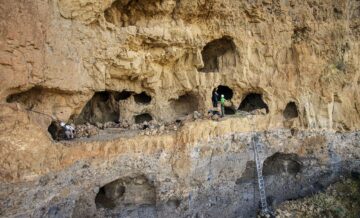Warren Cornwall in Science:
 THE CANARY ISLANDS—More than 1000 years ago, a young man stood on the northern shore of the island now known as El Hierro. Across the wave-swept Atlantic Ocean, he could see the silhouettes of other islands, a volcanic peak on one soaring toward the clouds only 90 kilometers away. Yet, for him, those islands were as unreachable as the Moon.
THE CANARY ISLANDS—More than 1000 years ago, a young man stood on the northern shore of the island now known as El Hierro. Across the wave-swept Atlantic Ocean, he could see the silhouettes of other islands, a volcanic peak on one soaring toward the clouds only 90 kilometers away. Yet, for him, those islands were as unreachable as the Moon.
His body betrayed the rigors of life on his arid volcanic outcrop. His molars were worn almost to the gums from grinding fibrous wild fern roots. His ancestors here had farmed wheat, but he and his contemporaries grew only barley and raised livestock such as goats. His genes held evidence that his parents were closely related, like many of the roughly 1000 people on the island, who had not mingled with outsiders for centuries. Also like many of his fellow islanders, he bore signs of an old head injury, likely sustained in a fight.
“This population faced a lot of challenges,” says archaeologist Jonathan Santana of the University of Las Palmas de Gran Canaria (ULPGC). “Survival on this island was a challenge every day.”
More here.
